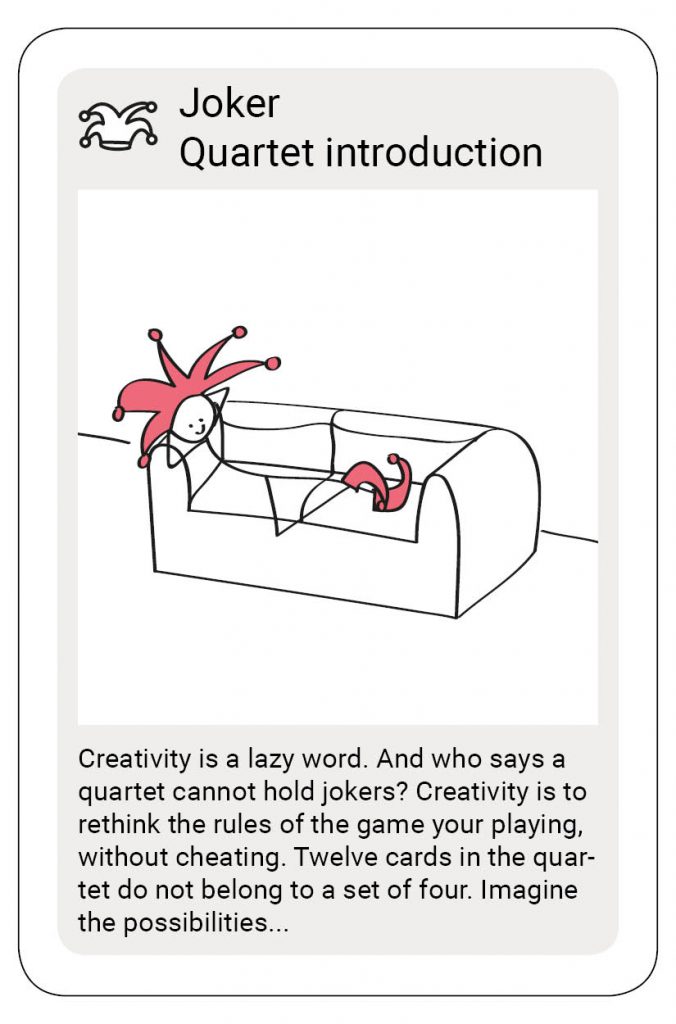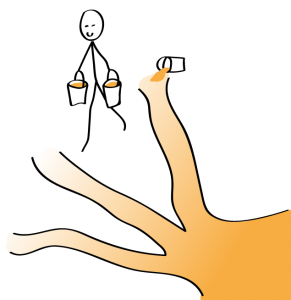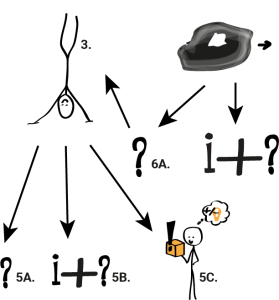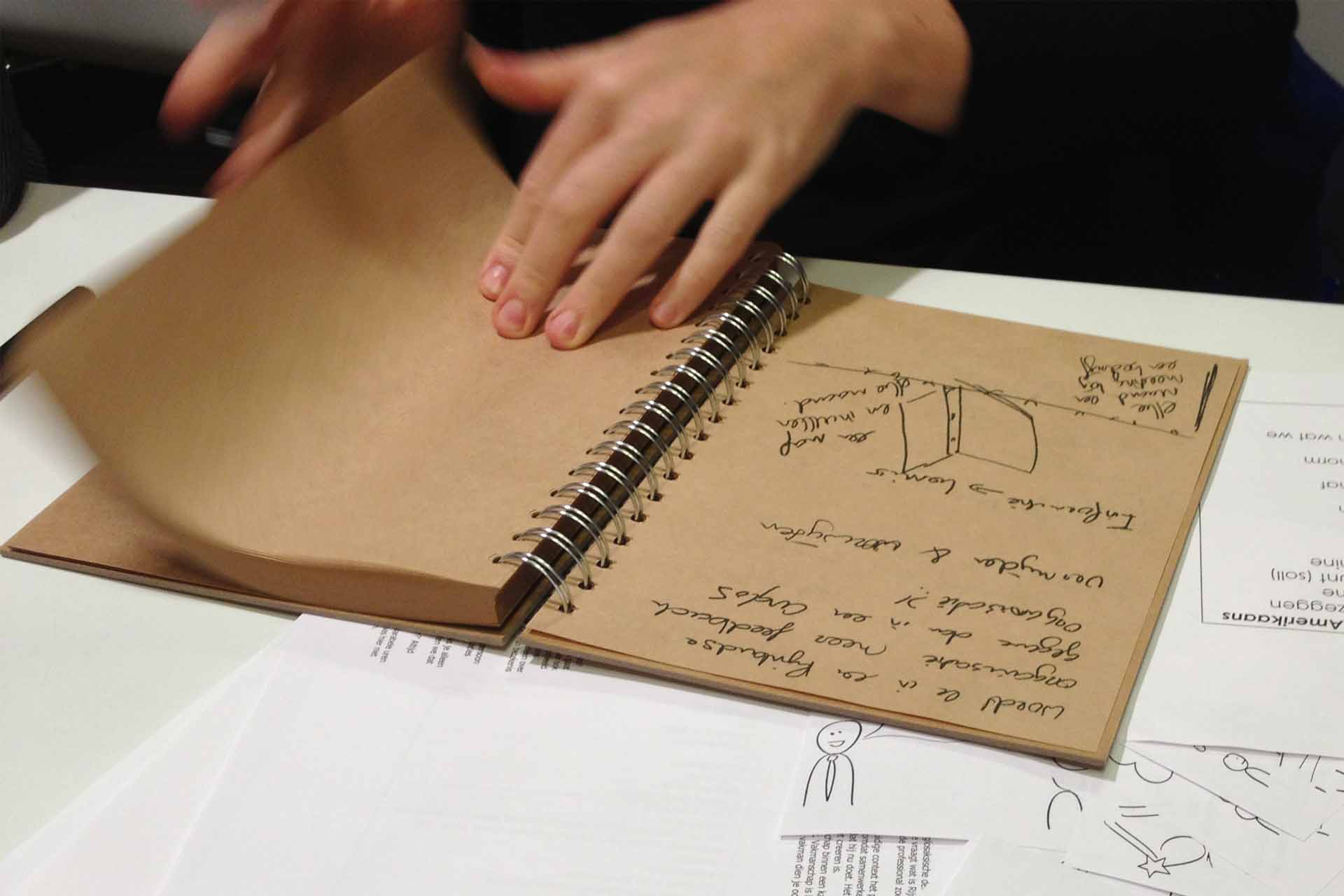
Firstly, I wish you a happy, healthy and a h…[fill out your own h-word] 2020!
Secondly, starting today I will post an article on creativity on my website, every Friday for an entire year (OMG, what am I getting myself into). Each article will correspond with a card from the Creativity Quartet 2020 I’m creating along the way. The Creativity Quartet 2020 is for professionals who want to understand creativity in its richness, to be able to make better use of their own creativity and/or to be able to speak to the creativity of others. It is my assumption is that if you have more understanding about creativity when you are trying to use your creativity, you will be better at it. In this article, I will introduce the Creativity Quartet 2020.
‘Creativity is a lazy word’
Quite recently I had a short chat with
Kees Dorst. Kees is famous in the design and design research scene. But he is also a philosopher. That combination made me curious about his opinion on creativity (also in relation to design). Our chat was half an hour. First thing I got from him was a big sigh and the words:
‘I like to avoid the word creativity. Creativity is a lazy word. It means everything and nothing.’
I was a bit thrown. But thinking about it, I absolutely agree with him. In fact, these simple words were the reason I started creativityn in the first place! (Thank you Kees for putting it that simply.)
With Creativityn I want to unfold all dimensions of creativity. It is the worst name ever because I always have to explain it. If you know a little bit about math, you no that to the n-th dimension comes close to ‘all dimensions’. Get it?
Creativity is apparently an important ability in work, but what the hell are we talking about? Creativity is a lazy word. Kees is right. What do people mean with ‘let’s be creative!’, what are their assumptions on creativity? What parts of creativity are we communicating about? And what do we want from each other when we want to be creative? This is the puzzle I am trying to understand. And I think I’ll be able to put some puzzle pieces in the right spot for you.
Lack of structure is killing
I’ve written articles on some dimensions of creativity before, but it lacked the structure and deadlines to keep me going. And so, I created a structure and deadlines, that I fear already. The Creativity Quartet 2020 (#CQ2020) with the complementary articles, is my way to get stuff out of my head onto the paper in word and image.
What can you expect from the Creativity Quartet 2020?
Firstly, the quartet will focus on Western believes in creativity. Don’t get me wrong, I am a big fan of gut feeling, intuïtion, the intelligence of the body, collective energy and more of the things we might feel and not (yet) empirically understand. I am curious about what can we learn from Eastern believes in creativity. Or from ancient tribes like the Mayas, or the Inca’s. I recently heard a story that in an African country there is no word for creativity, they use the word ‘life’. How cool is that?! There is so much more to creativity than what we empirically believe. The thing is, I have too little experience with, and knowledge of these non-Western believes in creativity. And I don’t feel enough of an expert to give an opinion on these matters. It is definitely part of the bigger plan to involve these dimensions as well. Maybe in a Creativity Quartet 2022 :).
Secondly, I divided the Creativity Quartet into 10 chapters:
1. Western creativity in 2020
2. Historical believes about creativity
3. Creativity discussions in research
4. Creativity as a process
5. Deliberate creativity methods
6. Creativity working principles
7. Creativity workshop techniques
8. Creativity mindsets & skills
9. Creativity in groups
10. Creativity in organizations
The first three chapters aim to give context and therewith a broader understanding of how we, as Westerners, think about creativity. Chapter four is an in-between chapter moving from context to business practice. Chapter five to seven are about methods, techniques and principles of creativity in a business context. Chapter eight to ten are about individuals, teams and organizations in relation to creativity. If you wonder how I make 52 articles from 10 chapters, check out the
CreativityQuartet2020_SubjectList. The list might change slightly along the way, I’ll try to keep the list up to date.
Broader context (1 to 3)
The focus on the first chapter will be on the general ideas we have on creativity. Every time people ask me ‘What do you do?’ and I say I am into creativity. The response is always something like: ‘Oh, interesting!’ or ‘That is so cool!’. Why is that?
In the second chapter, I will focus on the history. This will basically explain why we think the way we do on creativity.
And in the third chapter, we will see what type of assumptions and discussions are taking place in contemporary creativity research.
From a broader context to creativity in business practice (4)
Chapter four is an in-between chapter between a more contextual approach of creativity towards a very practical approach of creativity. Being a designer, I come from the practical side of creativity. Read any design book in which creativity is explained and it will describe THE creative process. This process is defined by Wallas (1926). In my exploration of more theoretical books on creativity, Wallas returns as well. In fact, I found him to be a linking pin between psychological and design perspective on creativity. This chapter will elaborate on the four-stage (how convenient in a quartet) association process Wallas defined in his book The Art of Thought (1926). Almost one hundred years ago, and we still believe in this process.
Creativity in practice: methods, principles, techniques (5 to 7)
Chapter five to seven are about using creativity in a business context. Chapter five is about more substantial methods than about simple workshop techniques. Chapter six focusses on the principles behind any creativity method or technique. And in chapter seven I will explain how those methods and principle translates into workshop techniques.
Creativity in practice: the people (8 to 10)
In September we start to focus on the people more in-depth. In a business context, creativity is all about individuals, teams and organizations. So we have chapter eight, nine and ten.
Next week on Creativityn, an introduction of our Western believes in creativity, and where they come from.
I hope you join me on this quest and I wish you a pleasant continuation of your day.
Willemijn Brouwer
The Creativity Quartet 2020 combines my knowledge on and experience with creativity. Just like any other person I have experience with creativity as long as I live, but more deliberate when I started studying Industrial Design Engineering (IDE@TUDelft) in 2001. I have over fifteen experience in facilitating and training creativity. My interest in creativity theory started in 2015. And I’m currently looking into doing promotional research on creating an overview of creativity theories.
I provide training in creativity & problem-solving to professionals, and I love to talk about creativity & problem solving on stage. To practice creativity, I also design serious/business games by request (Your Nine Dots) and I teach at IDE@TUDelft.
I do my best to source and summarize correctly. However, if you read anything incorrect or of the hook, please let me know! Ending with my favourite quote on creativity by Maya Angelou: “You can never use up creativity. The more you use, the more you have.”
 Firstly, I wish you a happy, healthy and a h…[fill out your own h-word] 2020!
Firstly, I wish you a happy, healthy and a h…[fill out your own h-word] 2020!






